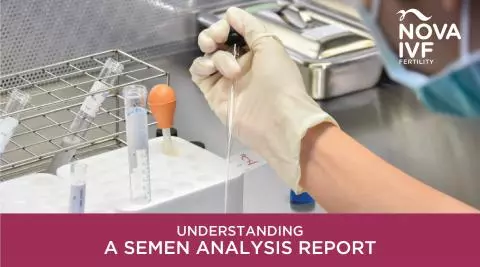How Is Asthenozoospermia Diagnosed? Testing for Sperm Motility Issues

Asthenozoospermia is the condition where a man's sperm partially or completely lacks motility. Sperm motility is the ability of the sperm to move or swim once ejaculation happens. This movement is a necessary part of sexual reproduction as the sperm needs to travel from the testes to the female egg.
Asthenozoospermia can occur in varying degrees and complete Asthenozoospermia occurs when all the sperms lack motility. The occurrence and extent of Asthenozoospermia can only be diagnosed after the study of semen samples.
Diagnosis of Asthenozoospermia
Diagnosis of Asthenozoospermia involves the study of fresh semen samples under a microscope to confirm sperm immotility and ascertain the reasons. Sperm can also lose its motility because of exposure to spermicides, rubber (condoms), hostile temperatures and the delay between production and the final examination. This is not counted as part of the immotility associated with identifying Asthenozoospermia. Blood tests to gauge hormonal levels can also be a part of the diagnosis.
Asthenozoospermia is a male infertility-related condition where only less than or equal to 40% of the sperm is motile. The condition is also defined as Asthenozoospermia when less than 32% of the produced sperm exhibits progressive motility. If 100% of the sperm lacks motility then the patient is suffering from complete Asthenozoospermia.
What Causes Asthenozoospermia?
Asthenozoospermia is often attributed to physical defects in the sperm that can be caused by congenital conditions. DNA fragmentation and Necrozoospermia are also known causes of Asthenozoospermia. Habits like smoking and alcohol are known to introduce toxins into the body which affects sperm health and destroy motility. Exposure to harmful chemicals is another external cause. Genital infections can also lead to this condition.
Diagnosis of Asthenozoospermia can be done by a specialist doctor or at a reputed fertility clinic. Talk to an expert to learn more about Asthenozoospermia, the causes, and the treatments available.
 Infertility Counselling
Infertility Counselling Female Infertility Treatment
Female Infertility Treatment Andrology Treatment
Andrology Treatment Fertility Enhancing Surgeries - Female
Fertility Enhancing Surgeries - Female Fertility Enhancing Surgeries - Male
Fertility Enhancing Surgeries - Male Endoscopy Treatment
Endoscopy Treatment IUI Treatment
IUI Treatment IVF Treatment
IVF Treatment ICSI Treatment
ICSI Treatment Advanced IVF Solutions
Advanced IVF Solutions Embryology
Embryology Vitrification Egg, Embryo, Sperm Freezing
Vitrification Egg, Embryo, Sperm Freezing Preimplantation Genetic Testing (PGT)
Preimplantation Genetic Testing (PGT) Donation Program Embryo / Egg / Sperm
Donation Program Embryo / Egg / Sperm Self-cycleTM IVF
Self-cycleTM IVF

 Self-cycleTM IVF
Self-cycleTM IVF










